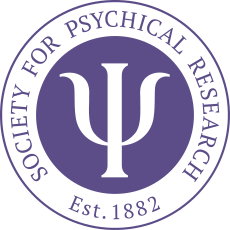From the publisher’s website: One morning during a busy clinic my dead grandfather dropped in for a chat... This sent me off on a journey: a mad dash through territory populated by mediums, psychics, poltergeists, and ghosthunters. Along the way I met some fascinating and often strange people. Let me take you with me as I travel through the hinterland of what we touchingly call reality. I'll introduce you to some of the people and beings I met on my journey. You'll get the inside story, the nuts and bolts of how someone like me can train to become a medium. Dr. Ian D. Rubenstein is a U.K. doctor who works in Enfield, North London. Since training as a medium, he has attempted to use the mediumistic skills he has learned in his medical work as a primary care physician. For more information about Dr. Rubenstein and his book, visit his website.
New Books and Media
Consulting Spirit: A Doctor’s Experience with Practical Mediumship, by Ian D. Rubenstein
Publish Date: December, 2011
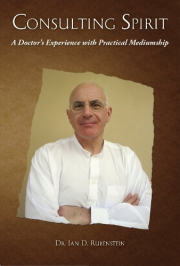
Living Consciousness: The Metaphysical Vision of Henri Bergson, by G. William Barnard
Publish Date: December, 2011

From the publisher’s website: Explores the thought of Henri Bergson, highlighting his compelling theories on the nature of consciousness and its relationship to the physical world.
Living Consciousness examines the brilliant, but now largely ignored, insights of French philosopher Henri Bergson (1859–1941). Presenting a detailed and accessible analysis of Bergson’s thought, G. William Barnard highlights how Bergson’s understanding of the nature of consciousness and, in particular, its relationship to the physical world remain strikingly relevant to numerous contemporary fields. These range from quantum physics and process thought to philosophy of mind, depth psychology, transpersonal theory, and religious studies.
Bergson’s notion of consciousness as a ceaselessly dynamic, inherently temporal substance of reality itself provides a vision that can function as a persuasive alternative to mechanistic and reductionistic understandings of consciousness and reality. Throughout the work, Barnard offers “ruminations” or neo-Bergsonian responses to a series of vitally important questions such as: What does it mean to live consciously, authentically, and attuned to our inner depths? Is there a philosophically sophisticated way to claim that the survival of consciousness after physical death is not only possible but likely?
G. William Barnard is Associate Professor of Religious Studies at Southern Methodist University. He is the author of Exploring Unseen Worlds: William James and the Philosophy of Mysticism, also published by SUNY Press, and coeditor (with Jeffrey J. Kripal) of Crossing Boundaries: Essays on the Ethical Status of Mysticism
Spooky Staffs: Paranormal Staffordshire and Haunted Staffordshire, by Anthony Poulton-Smith, Philip Solomon
Publish Date: December, 2011
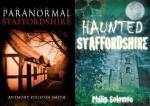
From the publishers’ websites: Paranormal Staffordshire: The first book to explore, in depth, the complete range of paranormal phenomena reported in Staffordshire. Here you will find accounts of well-known hauntings, as well as many previously undiscovered locations. This fascinating account of local ‘sightings’ looks at traditional historical legends as well as modern day experiences, providing fresh knowledge together with the author’s personal accounts of new and traditional stories. Anthony Poulton-Smith’s ghostly tour of the area is illustrated with many of his own photographs and is an ideal book for anyone curious about the unexplained, or even a paranormal tourist. Turn the pages if you dare, and join him on the adventure of your life….or afterlife!
Haunted Staffordshire: From heart-stopping accounts of apparitions, manifestations and related supernatural phenomena to first-hand encounters with ghouls and spirits, this collection of stories contains both new and well-known spooky stories from around Staffordshire. Compiled by the Wolverhampton Express & Star's own psychic agony uncle, Philip Solomon, this terrifying assortment of tales includes details of long-reported poltergeist activity at Sinai House, strange goings-on at the Gladstone Pottery Museum and even a reported visitation from author J.R.R. Tolkien in Leek! Haunted Staffordshire is sure to fascinate everyone with an interest in the area’s haunted history. Philip Solomon is a professional investigator of the paranormal, and has been described by Hans Holzer, a leading authority on the paranormal, as ‘the greatest medium of our time’. Philip is a feature writer, the author of fifteen published books and also has his own radio programme on WCR FM, ‘The Voice of Wolverhampton’. Previous publications for The History Press include Haunted Derby and Haunted Black Country. He lives in Willenhall, West Midlands.
Ghost Hunting for Beginners, by Rich Newman
Publish Date: November, 2011

From the publisher’s website: If you're one of the countless fans of ghost hunting TV shows itching to get off the couch and track some spirits on your own, this book provides everything you need to know to conduct a successful paranormal investigation.
Professional ghost hunter Rich Newman shares proven scientific methods, tried-and-true low-tech approaches, and the latest technology used by the pros. You'll learn what ghosts are, why hauntings occur, the different types of supernatural phenomena, and the importance of conducting responsible investigations. Find out how to form a team, interact with ghosts, gather and examine evidence — and what not to do when seeking spirits. Along with helpful hints, insider tips, and seasoned insights gained from Newman's decade of field work, Ghost Hunting for Beginners is peppered with true accounts of ghost stories from famous cases and the author's own investigations.
Rich Newman (Tennessee) has been investigating the paranormal for over ten years and is the founder of the group Paranormal Inc. He is also a filmmaker whose first feature film, a documentary called Ghosts of War, will be released in 2011. His articles have appeared in Haunted Times and Paranormal Underground.
An Introduction to the Psychology of Paranormal Belief and Experience, by Tony Jinks
Publish Date: November, 2011
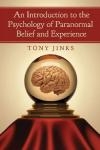
From the publisher’s website: When someone admits to a strange experience, such as witnessing an unidentified flying object, having telepathic hunches, or seeing angels or ghosts, listeners usually explain it away as mistaken perception, intoxication, ignorance, or even mental illness. Though these unsympathetic psychology-based explanations remain the most popular responses to claims of the supernatural, those who use them often have little understanding of what such dismissive "solutions" actually entail. This study offers a balanced and accessible analysis of various explanations for the paranormal. By providing insight into how these theories are applied, or misapplied, to inquiry into the paranormal, it clarifies the relationship between the field of psychology and the supernatural.
Tony Jinks lectures at the University of Western Sydney, Australia, where he teaches neuroscience and paranormal studies to psychology students. He is a specialist consultant on the Australian Institute of Parapsychological Research Review Board and publishes in a wide variety of scientific fields.
Demystifying Shamans and their World: A Multidisciplinary Study, by Adam J. Rock and Stanley Krippner
Publish Date: November, 2011

Exploring Frontiers of the Mind-Brain Relationship, edited by Alexander Moreira-Almeida and Franklin Santana Santos
Publish Date: November, 2011

From the publisher’s website: The conscious mind defines human existence. Many consider the brain as a computer, and they attempt to explain consciousness as emerging at a critical, but unspecified, threshold level of complex computation among neurons. The brain-as-computer model, however, fails to account for phenomenal experience and portrays consciousness as an impotent, after-the-fact epiphenomenon lacking causal power. And the brain-as-computer concept precludes even the remotest possibility of spirituality. As described throughout the history of humankind, seemingly spiritual mental phenomena, including transcendent states, near-death and out-of-body experiences, and past-life memories have recently been well documented and treated scientifically. In addition, the brain-as-computer approach has been challenged by advocates of quantum brain biology, who are possibly able to explain, scientifically, nonlocal, seemingly spiritual mental states.
Exploring Frontiers of the Mind-Brain Relationship argues against the purely physical analysis of consciousness and for a balanced psychobiological approach. This thought-provoking volume bridges philosophy of mind with science of mind to empirically examine transcendent phenomena, such as mystic states, near-death experiences and past-life memories, that have confounded scientists for decades. Representing disciplines ranging from philosophy and history to neuroimaging and physics, and boasting a panel of expert scientists and physicians, including Andrew Newberg, Peter Fenwick, Stuart Hameroff, Mario Beauregard, Deepak Chopra, and Chris Clarke, the book rigorously follows several lines of inquiry into mind-brain controversies, challenging readers to form their own conclusions – or reconsider previous ones. It is essential reading for researchers and clinicians across many disciplines, including cognitive psychology, personality and social psychology, the neurosciences, neuropsychiatry, palliative care, philosophy, and quantum physics.
Making Sense of Near-death Experiences: A Handbook for Clinicians, edited by Mahendra Perera, Karuppiah Jagadheesan and Anthony Peake
Publish Date: November, 2011
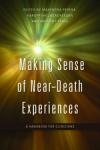
From the publisher’s website: A near-death experience (NDE) is a phenomenon whereby powerful physical and emotional sensations and visions are experienced by someone who is either close to death or has been declared clinically dead.
This is an accessible guide to the theory and evidence underlying the phenomenon of NDEs. With contributions from leading international experts in the field, it provides an overview of the research into NDEs, the nature of NDEs and how they have been experienced around the world, and the physiological, psychological and medical bases of the phenomenon. The book also discusses children's NDEs, NDEs from a religious perspective, the role of light in NDEs, the assessment and management of NDEs, and the future of research into the phenomenon.
This essential handbook will provide all those who may encounter someone who has had an NDE with the knowledge and understanding they need, including nurses, doctors, palliative care workers, psychologists, psychiatrists and pastoral workers.
Paranormal Cambridgeshire and Haunted Peterborough, by Damien O'Dell and Stuart Orme
Publish Date: November, 2011
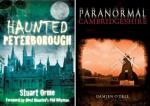
Paranormal Cambridgeshire, by Damien O'Dell: What gives Cambridge such a special place in the study of the paranormal? One of the most significant factors is that the Society for Psychical Research originated here. The SPR is Britain’s leading organisation for research into the paranormal. The Society was founded in 1882 and its first President was Henry Sidgwick, Professor of Moral Philosophy at Trinity College. Sidgwick’s principal colleagues in the SPR were Frederic William Henry Myers and Edmund Gurney, other Fellows of Trinity. Another factor is that Cambridge University itself is an extremely haunted location with phenomena reported from any number of colleges including Girton, Sidney Sussex, Emmanuel, Corpus Christi and Peterhouse. Cambridge is also home to Abbey House, which, at one time was regarded as the most haunted house in England, long before Essex’s Borley Rectory claimed that particular accolade.
‘Fenland’, that vast area of reclaimed marshland in Cambridgeshire, is a most mysterious corner of England. Ely Cathedral is notorious for its ghostly monks and Oliver Cromwell’s former home in Ely has regularly featured in the press with its stories of the unexplained. Wicken Fen is well known – for its spectral black dog. Wisbech, capital of the Fens, has featured in a well-documented investigation into poltergeist activity, at Hannath Hall. Peterborough Museum continues to fascinate paranormal researchers and it is thought by some to be the most active contemporary haunted site in the entire county. UFO sightings and crop circles are other phenomena regularly reported from Cambridgeshire. I consider it one of the U.K’s busiest areas for paranormal activity.
Haunted Peterborough, by Stuart Orme: Peterborough has a rich and fascinating history, stretching back 3,500 years to the Bronze Age. The city is a vibrant place with a new town surrounding an ancient town centre, still dominated by its Norman cathedral. But the city has a sinister and spooky side…
Written by the creator and guide of the city's popular ghost walks, discover the spooky side of Peterborough's past. Uncover the eerie secrets of the city, from apparitions of monks to ghostly children; from a slaughtered Cavalier to a phantom lorry. This book explores many of the city's historic buildings and their ghost stories, including Peterborough Cathedral precincts. It also covers in print, for the first time, detailed accounts of the spectres, stories and sightings at Peterborough Museum, one of Britain's most paranormally active buildings.
The Out-of-Body Experience: The History and Science of Astral Travel, by Anthony Peake
Publish Date: November, 2011

From the publisher’s website: An exciting fresh look at the idea that the mind can function outside the body – with first-hand accounts and a brilliant new explanation, based on the latest science.
One of the greatest mysteries of human experience is the sensation of leaving the body behind and experiencing another level of reality. Is this merely an hallucination or is it something more? In this revolutionary book Anthony Peake, a leading researcher in the subject, demonstrates that Out-of-Body Experiences, Lucid Dreaming, Remote Viewing and Astral Travel are all elements of the same phenomenon – indicating to us that the universe is far more complex than we can ever have imagined. Peake reviews the history of this fascinating subject, then, using recent discoveries in neurology, consciousness studies and quantum physics, he suggests a challenging new model of how consciousness interfaces with ‘reality’. The Out-of-Body Experience and its cousins are a hot topic in current scientific investigation, and at last we have a convincing way to understand them. This is the first book on the topic to cast its net around dreams, shamanism, Eastern thought and quantum physics, with OBEs as the central core.
F.C.S. Schiller and the Dawn of Pragmatism: The Rhetoric of a Philosophical Rebel, by Mark J. Porrovecchio
Publish Date: October, 2011

From the publisher’s website: The intellectual history of pragmatism traditionally posits that its origins are found in the works of C. S. Peirce, William James, and John Dewey. What if that story is only partially true? Ferdinand Canning Scott Schiller, the foremost first generation British pragmatist, was one of the most vocal proponents of pragmatism in the late 1800s and early 1900s. He penned over a dozen books, authored hundreds of essays and reviews, and sought to popularize the philosophy of practicalism. Yet in the years before and after his death, both he and his critics engaged in arguments that helped to erase him from the story of pragmatism.
F. C. S. Schiller and the Dawn of Pragmatism: The Rhetoric of a Philosophical Rebel, by Mark J. Porrovecchio, is the first comprehensive biography of Schiller ever undertaken. It seeks to answer questions like: why were Schiller's own arguments used against him? Why were his interests, philosophical and otherwise, central to his erasure? Why would the pragmatism of today gain by reclaiming a neglected figure from its past? A crucial part of understanding those questions relates to the rhetorical strategies at play in the arguments Schiller made.
Pragmatism today is a vital and vibrant part of interdisciplinary discussions that range from philosophy, to religion, to science, to politics. But it is intellectually incomplete and historically inaccurate. Reclaiming Schiller means asking hard questions about the functions and scope of pragmatism. Though the answers will not suit everyone, they will help to make pragmatism—past, present, and future—more honest, more engaging, and more interesting.
Mark J. Porrovecchio is director of forensics and assistant professor in the Department of Speech Communication at Oregon State University.
Mutants and Mystics: Science Fiction, Superhero Comics, and the Paranormal, by Jeffrey J. Kripal
Publish Date: October, 2011
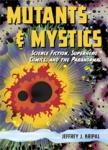
From the publisher’s website: In many ways, twentieth-century America was the land of superheroes and science fiction. From Superman and Batman to the Fantastic Four and the X-Men, these pop-culture juggernauts, with their "powers and abilities far beyond those of mortal men," thrilled readers and audiences—and simultaneously embodied a host of our dreams and fears about modern life and the onrushing future.
But that's just scratching the surface, says Jeffrey Kripal. In Mutants and Mystics, Kripal offers a brilliantly insightful account of how comic book heroes have helped their creators and fans alike explore and express a wealth of paranormal experiences ignored by mainstream science. Delving deeply into the work of major figures in the field—from Jack Kirby’s cosmic superhero sagas and Philip K. Dick’s futuristic head-trips to Alan Moore’s sex magic and Whitley Strieber’s communion with visitors—Kripal shows how creators turned to science fiction to convey the reality of the inexplicable and the paranormal they experienced in their lives. Expanded consciousness found its language in the metaphors of sci-fi—incredible powers, unprecedented mutations, time-loops and vast intergalactic intelligences—and the deeper influences of mythology and religion that these in turn drew from; the wildly creative work that followed caught the imaginations of millions. Moving deftly from Cold War science and Fredric Wertham's anticomics crusade to gnostic revelation and alien abduction, Kripal spins out a hidden history of American culture, rich with mythical themes and shot through with an awareness that there are other realities far beyond our everyday understanding.
A bravura performance, beautifully illustrated in full color throughout and brimming over with incredible personal stories, Mutants and Mystics is that rarest of things: a book that is guaranteed to broaden—and maybe even blow—your mind.
